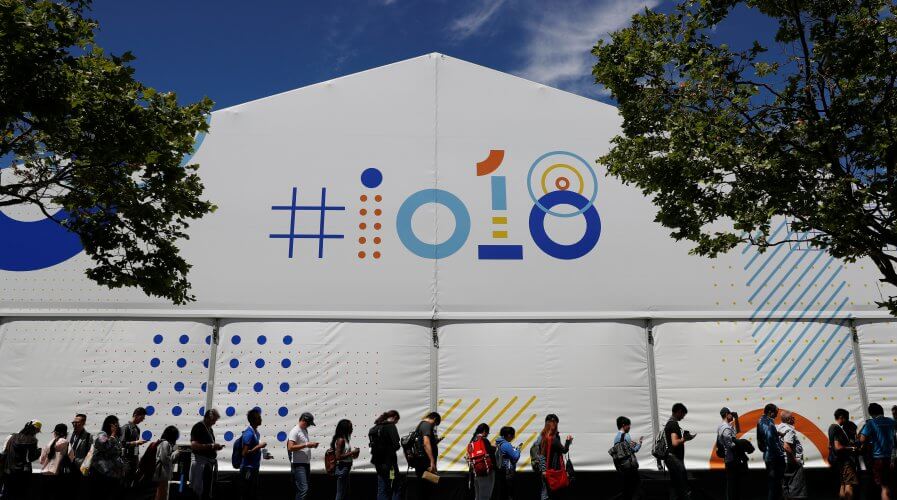
Attendees wait in line to attend a session during the annual Google I/O developers conference in Mountain View, California, May 8, 2018. REUTERS/ Stephen Lam
The business potential of Google’s new voice capabilities
GOOGLE hosted its annual conference, the Google I/O 2018 at the Shoreline Amphitheatre in Mountain View, California this week and made a couple of very interesting announcements.
The technology giant, with its announcements, set the tone for the new era of capabilities that leverage AI to transform the world of consumers across industries.
To understand the business potential of these announcements, let’s recap some of the most important ones: The launch of six new voices for Google Assistant. They have even captured John Legend’s harmonious voice, using advanced technology that can “extrapolate a voice from a short recording session to mimic the vocal “characteristics” of anyone in the world”.
The company also announced Continuous Conversation and Multiple Actions. These functionalities give the Google Assistant the ability to make conversations more natural. You don’t have to preface any of your requests with, “OK, Google or Hey Google!” anymore, and you don’t have to separate one request from another.
Just speak naturally. “Turn on the aircon and the TV, switch to ESPN, and order my favorite pizza from Dominos” is what you can ask Google to do for you now, all in a single breath. Say please every once in a while to show your gratitude.
Finally, the most exciting announcement was the launch of Google Duplex. Simply put, it allows the Google Assistant to speak on your behalf, to say, make an appointment at the salon or book a table for your gang at a restaurant – all with a natural, friendly voice. The other side won’t even know they’re talking to your AI-powered voice assistant, that’s how smart the device has become.
No joke. Google Assistant will start making phone calls to small businesses to make appointments on you behalf. It's called Google Duplex. The AI caller even adds uhmms and hmms #io18 pic.twitter.com/r5Ie33YFEc
— Rich DeMuro (@richdemuro) May 8, 2018
So, what’s the implication for businesses? Well, there are quite a few:
For starters, businesses that are experimenting with AI-powered voice solutions must know that “technical” voices won’t do. Customers might make do with them for a while but at the end of the day, they’ll prefer a natural sounding voice – especially if you’re aiming to become an integral part of their day and their lives.
Next, focus on integration. Google has an ecosystem of products, including the Android operating system. Leveraging that connection, the Google Assistant does a bunch of important things for you, including making phone calls using Google Duplex.
If you don’t have an ecosystem, make sure you integrate with someone who’s building an ecosystem. Say you make wireless chargers for example. Try to fit in a module to let it speak with the Google Assistant. That way, you’ll make life simple for customers and always be in demand.
Finally, focus on the customer experience you provide. This is key, especially for businesses who deal with customers directly. Make sure you and your product, both provide a stellar customer experience.
Google wasn’t happy just delivering a great virtual assistant. It went back and made improvements. The natural voice is a great feature and will significantly boost adoption and push it ahead of other “competitors in the market”. They built other functionalities around it to improve the customer experience further, including making “OK, Google” redundant.
At the end of the day, Google’s new voice capabilities will transform a lot of the emerging products and services in the market. The potential is enormous.
READ MORE
- Ethical AI: The renewed importance of safeguarding data and customer privacy in Generative AI applications
- How Japan balances AI-driven opportunities with cybersecurity needs
- Deploying SASE: Benchmarking your approach
- Insurance everywhere all at once: the digital transformation of the APAC insurance industry
- Google parent Alphabet eyes HubSpot: A potential acquisition shaping the future of CRM




